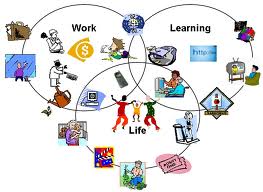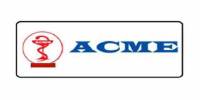Introduction:
“I think the most important education that we have is the education which now I am glad to say is being accepted as the proper one, and one which ought to be widely diffused, that industrial, vocational education which puts young men and women in a position from which they can by their own efforts work themselves to independence.”
-William Howard Taft
Vocational means pertaining to, or noting instruction or guidance in an occupation or profession chosen as a career or in the choice of a career: a vocational counselor.
A vocation is a term for an occupation to which a person is specially drawn or for which they are suited, trained or qualified (1).
Vocational Education and Training
Defining VET as a sector within the education system poses a number of difficulties. For the most part, general and academic education is seen as that which builds analytical skills, knowledge and critical thinking, while VET develops craftsmanship, practical experience and practical problem-solving. However, this simple distinction does not hold up to scrutiny. Critical thinking and analytical skills are needed in the case of a good plumber or electrician who must routinely make judgments in order to solve problems. Equally, a good surgeon needs a large set of practical skills to masterfully operate a patient. These simple distinctions can also lead to confusion and academic drift of vocational institutions (cf. Neave, 1978) or a vocationalisation of higher education (cf. Williams, 1985). (2)
Vocational RehabilitationVocational Rehabilitation agencies, often referred to as “VR”, are in every state. VR helps people with disabilities prepare and look for a job. VR was created out of the Rehabilitation Act of 1973. VR programs are run by state agencies. They are designed to
help people with disabilities meet their career goals. They help people with disabilities get jobs, whether the person is born with a disability, develops a disability or becomes a person with a disability while working (3).
Vocational Rehabilitation Services
- Eligibility Determination
- Helps you to figure out if you can actually get the services.
- Assessment of vocational needs
- Finds out about your interests, skill and services you may need.
- Development of your Individualized Plan for Employment
- Outline of your goals and the services you need/will receive.
- Coordination of services
- Helps in getting the services you need to reach your goals.
- Post‐employment services
- Helps you keep your job once you get it.
Qualify for services from VR
According to the federal government, if you are:
An “individual with a disability”, meaning a person who Has a physical or mental disability that is a sizable (big) obstacle (block) to getting a job. Can benefit from VR services to get a job.
An individual who needs VR services to prepare for, get or keep a job.
If you receive Supplemental Security Income (SSI) and/or Social Security Disability Insurance (SSDI) benefits, you can receive VR services(3).
Goal of the disability Vocational Rehabilitation Program (4)
The goal of the Disability Vocational Rehabilitation Program is to help people who are receiving disability benefits return to work. For example, they could:
- return to their former job with their former employer;
- return to a modified version of their former job;
- work at a different job with their former employer using their current or newly acquired skills;
- work at a different job with any employer able to use their current or new skills;
- be retrained for a job through skills or education upgrading;
- be helped to gain skills for self-employment.
Benefit from this program (4)
The program plan is looking for people receiving disability benefits who could benefit from vocational rehabilitation. The most likely candidates are those:
- Who are motivated to return to work; and
- Whose physicians agree that they can cope with a work-related rehabilitation program.
Services are include :
This program centers on developing an individualized return-to-work rehabilitation plan for each participant. A rehabilitation specialist in the participant’s community will work with that person The Disability Vocational Rehabilitation Program could include, but is not limited to, any number of the following services (4):
- Guidance – Participants will receive one-on-one guidance to identify their needs, assess their education and current job skills, discuss their work goals and find out about the current job market in their area. With help from a rehabilitation specialist, participants will learn about the skills that employers are looking for, or look at opportunities for self-employment.
- Planning A Return-to-Work – A local vocational rehabilitation specialist will work with the participant to develop an individualized return-to-work rehabilitation plan in consultation with the participant’s treating physician. The participant, as well as the participant’s doctor and local vocational rehabilitation specialist must all sign this plan. Then it becomes the participant’s contract with the Pension Plan.
- Improve Skills/Retraining – If participants need to improve their skills, upgrade their education or retrain to secure a job, the Pension Plan may cover the costs.
- Developing Job Search Skills – After participants complete their work-related rehabilitation, their rehabilitation specialist will help them to find work. For example, they could:
- Find out where the jobs are
- Prepare a résumé
- Join a job-finding club to practice their interview skills; and
- Develop strategies to get interviews or identify organizations that might hire them
Traditional Venues for Vocational Training
Secondary School
Most high schools offer some form of vocational training program, increasingly called career and technical education. The expanded concept of career and technical education provides for a planned program of courses and learning experiences that allow students to explore career options, develop academic skills, achieve high academic standards, and prepare for industry-defined work or advanced education. For example, the Tech Center at Yorktown, New York, offers twenty-nine vocational specialties, not only to prepare students for the construction and manufacturing industries (traditional specialties of vocational education), but also for jobs in business, human services, health services, and natural and agricultural science. Specialties are as diverse as advertising art and design, television production, computer graphics, cosmetology, business and computer technology, auto mechanics, carpentry, masonry, small engine technology, practical nursing, floral design, and urban forestry.
Public schools in some states have separate vocational schools where students attend part time, either as part of the school day or in the evening, for specialized programs in addition to academic courses. These programs usually include a sequence of courses as well as work-based learning experiences. Large communities and cities often have separate public schools that students attend full time that provide both academic instruction and vocational training to high school students. These schools commonly use the cooperative training technique, in which students work part time in the job for which they are preparing. The traditional focus of these schools is changing; no longer do students simply train for a vocation, but they are also required to work toward a high school diploma or a GED. Additionally, students are encouraged to consider going on to some form of postsecondary education(5).
Tech Prep Education
The Carl D. Perkins Vocational and Technical Education Act of 1998, in addition to providing funds to postsecondary institutions, provided funding to programs known as Tech Prep programs. Tech Prep programs are based on a collaboration between secondary schools and postsecondary institutions to help prepare students for high tech careers in areas such as engineering, technology, applied science, health, and applied economics, and to improve the academic success of vocational students. Tech Prep is a sequenced program of study that combines at least two years of secondary and two years of postsecondary education. It is designed to help students gain both academic knowledge and technical skills. These programs typically lead to either a certificate or an associate’s degree in a specific career field. Almost one half of the country’s high schools offer some type of Tech Prep program. In fiscal year 2005 $106 million was appropriated for the program, although because of proposed budget cuts, its future is uncertain.
The effectiveness of Tech Prep programs is up for debate. Evaluations in Texas and New York found evidence that students enrolled in these programs were less likely to drop out of high school or have a chronic absenteeism problem and were more likely to enroll in postsecondary school. However, academic achievement and labor market outcomes were not demonstrably improved. This may be because Tech Prep programs are not always implemented as envisioned in the legislation, but instead are often implemented piecemeal or with a focus on improving only academics(5).
Postsecondary Trade School
The 2004 National Assessment of Vocational Education reported that about one-third of college students were involved in vocational programs as a major part of their studies. Postsecondary vocational schools, also called trade schools, provide an educational option other than community colleges and four-year colleges. They also help older students who want to advance or change their careers. Often these schools cater to the needs of working adults by offering classes at night or online.
Trade schools offer both degree programs and vocational certificates. There are many occupations that require a trade school education, including hairdressing, massage therapy, auto mechanics, plumbing, and carpentry. Trade schools also teach students technological, culinary, and health care skills. Some trade schools offer apprenticeships as well(5).
Other opportunities for vocational training
Vocational programs at both the secondary and postsecondary levels vary in their quality and effectiveness. While graduation from a good vocational program or trade school can greatly improve one’s employment outlook, there are other ways to get specific occupational training. Apprenticeships, military service, community colleges, and distance learning courses all provide opportunities to improve job skills and employment possibilities(5).
Apprenticeships
Completing an apprenticeship is an alternative to traditional vocational training. Apprenticeships are most common for highly skilled manufacturing or construction jobs, but are available for more than 850 occupations in many industries. Common programs train people to be boilermakers, bricklayers, carpenters, electricians, firefighters, machinists, millwrights, plumbers, roofers, telecommunications technicians, and tool and die makers. Less common programs train people to be stage technicians and actors, cooks, designers, paralegals, environmental technicians, computer programmers, and landscapers.
Apprenticeships combine on-the-job training with classroom instruction. Apprentices are paid while on the job. Apprenticeships typically take four to six years to complete, although some can be completed in as little as one year. Because apprenticeships are paid programs, competition for available slots is often fierce(5).
Military Training
Military service also offers ways for enlisted people to pursue vocational and technical licensing and certification, called Vo-Tech programs. These programs either document past training and experience or offer new opportunities to take courses and exams to get the certifications necessary to make a successful transition to occupations outside of the military(5).
Army COOL Program
The Credentialing Opportunities On-Line (COOL) program helps Army Soldiers meet civilian certification and license requirements related to their occupational specialty in the military. COOL provides information on civilian jobs that are equivalent to a military occupational specialty. It also provides information on national certifications available in that occupation, and if state licensure is required. The Costs and Resources section helps Army enlisted personnel see what resources are available to help pay for needed licenses and certificates(5).
The Air Force
The Community College of the Air Force (CCAF) offers sixty-seven fields of study directly related to Air Force specialties. These fields of study tend to be highly technical in nature; graduates are awarded an associate’s degree. Enrollment is free to enlisted people in the Air Force. CCAF courses are recognized by organizations that issue certifications for specific occupations as well as by governmental organizations that issue licenses.
The Air Force Institute for Advanced Distributed Learning provides more than four hundred career development courses and other specialized training courses to enlisted people in the Air Force. These distance-learning courses are provided in correspondence and Web-based forms(5).
Community Colleges
Community colleges provide another way to train for a specific occupation. Community colleges have typically been a low-cost alternative for the first two years on the way to a four-year degree. Community colleges still serve this population of students who intend to transfer to four-year colleges, but they have expanded to serve people who want to expand their skills for a variety of reasons—to advance or get promoted, to learn new skills needed in the marketplace, or to change careers. Contracts with corporations also enable community colleges to provide training of various kinds to corporate workers.
About one-third of all students in postsecondary education are in vocational programs, including those enrolled in community colleges. They enroll with a variety of goals, from earning a certificate, to enhancing job skills, to earning an associate’s degree. Most students in vocational programs in community colleges never earn a degree or other credential. However, the 2004 National Assessment of Vocational Education found that for the vast majority of participants in community college vocational programs, the vocational training had positive effects on their earning potential. The benefits were higher for those who completed more coursework, but even students who did not complete certificates or degrees derived some earnings benefit from the training they received(5).
Employer-Provided Training
Another avenue for occupation-specific training is through an employer. Many employers provide the basic training needed to perform particular jobs. Others provide training that allows employees to advance in the company. Companies may also provide employees with general employment skills assistance such as computer skills training, human resources training, or training on how to work in a team. These are valuable to workers in their current jobs, as well as in future employment(5).
On-the-Job Training
Employees learn on the job in many occupations. On-the-job training is particularly used in manufacturing. In textile mills, for example, extensive on-the-job training is generally provided. Training is offered to beginning workers as well as more experienced workers, to enable them to advance to more skilled jobs. This training often takes the form of being paired with a more experienced worker on the floor. Classroom instruction may also be used. As companies develop a greater emphasis on teamwork, many firms have developed training courses that encourage employee self-direction and responsibility as well as the development of interpersonal skills. In manufacturing sectors such as motor vehicle and parts manufacturing and machinery manufacturing, employers frequently offer formal apprenticeship programs that combine on-the-job training with technical classroom instruction(5).
Distance Learning Courses
Another option for obtaining job skills is to enroll in distance education programs that provide career training. Distance learning programs allow a student to learn at his or her own pace and complete work in his or her own time. They provide the same course materials that would be found in a typical classroom setting, but those materials are delivered outside of a classroom setting—typically either through the mail (a correspondence course) or online. In some distance learning programs a student must be online with a teacher or other students at a specific time, and assignments must be completed according to a rigid schedule. Other courses are designed for students to complete at their own pace. And these courses are diverse: one can develop skills and knowledge in bookkeeping, carpentry, home remodeling and repair, computer programming, Web site design, dressmaking, pet grooming, photography, day care management, motorcycle or small engine repair, court reporting, and many other fields(5).
CONCLUSION
There are many options available for obtaining occupational skills. Traditional vocational education, offered in high schools and postsecondary trade skills, is still a good choice. Other excellent alternatives include apprenticeships, community college programs, the education and training offered by the military services, and distance learning courses(5).
Reference:
- Http://en.wikipedia.org/wiki/Vocation
- Education international; Literature review, Vocational Education and Training.
- Www.jan.wvu.edu/sbses/vocrehab.htm
- Http://www.servicecanada.gc.ca/eng/isp/pub/factsheets
5. Http://careers.stateuniversity.com/pages/854/Vocational-Training.
















